It looks like another extremely hot day, so I decide to take a boat to Greenwich, I walk via Tate to Millbank Pier and take the Thames water Bus.




 |
| The Millenium Bridge & St. Paul's Cathedral |
 |
| Tate Modern |
 |
| Change at Bankside pier |

 |
| View of the "Shard" behind the HMS Belfast |

 |
| The Phoenix and the A&B King Henry's wharfs behind the Wharfing piers |
The Docklands, a large area along the Thames riverfront on the eastern edge of London, was once home to the world's busiest port.
In the 1960s, after the construction of the Thames Barrier - a storm surge barrier - and a modern container port in Tilbury, activity in the area came to a halt. The many wharves and warehouses fell into decay.
In the 1960s, after the construction of the Thames Barrier - a storm surge barrier - and a modern container port in Tilbury, activity in the area came to a halt. The many wharves and warehouses fell into decay.
 In 1981 the British government founded the London Docklands Development Corporation. Its purpose was the revitalisation of some 2100 hectares of docks (8 sq. mi).
In 1981 the British government founded the London Docklands Development Corporation. Its purpose was the revitalisation of some 2100 hectares of docks (8 sq. mi).  Greenwich is the home of Greenwich Mean Time (GMT)and the Prime Meridian of the world but that doesn't mean the line of longitude is the only notable thing about the area.
Greenwich is the home of Greenwich Mean Time (GMT)and the Prime Meridian of the world but that doesn't mean the line of longitude is the only notable thing about the area. 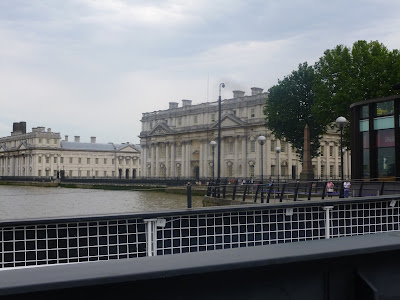 The most important of the group of attractions known (since the Queen's Diamond Jubilee in 2012) as the Royal Museums Greenwich, the National Maritime Museum is the world's largest maritime museum, a huge store of creatively organised maritime art, cartography, models, interactives and regalia.
The most important of the group of attractions known (since the Queen's Diamond Jubilee in 2012) as the Royal Museums Greenwich, the National Maritime Museum is the world's largest maritime museum, a huge store of creatively organised maritime art, cartography, models, interactives and regalia.
I have visited these museums some time ago.
 |
| Cutty Sark, the most famous tea clipper in the world, is in a beautiful glassed-off dry dock on the riverside in Greenwich. Her name comes from Tam O’Shanter, a poem by Robbie Burns. |
 As the centrepiece of the Maritime Greenwich World Heritage Site, the classical buildings that collectively form the Old Royal Naval College were designed by some of England’s most renowned architects and are considered to be amongst the finest in Europe.
As the centrepiece of the Maritime Greenwich World Heritage Site, the classical buildings that collectively form the Old Royal Naval College were designed by some of England’s most renowned architects and are considered to be amongst the finest in Europe.
I took the DLR (Docklands Light Railway) above ground to the Tower Gateway.
From there I walked all the way back, where possible along the bank, visiting many of the churches.


 |
| St Magnus the Martyr (Lower Thames Street) |




The church is dedicated to St Magnus the Martyr, earl of Orkney, who died on 16 April 1118. He was executed on the island of Egilsay having been captured during a power struggle with his cousin, a political rival. Magnus had a reputation for piety and gentleness and was canonised in 1135.
 |
| The Monument, designed by Sir Christopher Wren was built in 1677 to commemorate the Great Fire of London |
 |
| St Mary Abchurch is a beautifully proportioned little Wren church. |
 The original church built on this site in the 12th century, was burnt down in the Great Fire of 1666. In 1681 work was begun on the present building, designed by Sir Christopher Wren, and it was completed in 1686. The church has changed very little in appearance since then. The dome painting was added in 1708. It depicts the worship of heaven, with, in the centre the Divine Name in Hebrew characters.
The original church built on this site in the 12th century, was burnt down in the Great Fire of 1666. In 1681 work was begun on the present building, designed by Sir Christopher Wren, and it was completed in 1686. The church has changed very little in appearance since then. The dome painting was added in 1708. It depicts the worship of heaven, with, in the centre the Divine Name in Hebrew characters. 


For more than 1,400 years, a Cathedral dedicated to St Paul has stood at the highest point in the City.
The present Cathedral, the masterpiece of Britain's most famous architect Sir Christopher Wren, is at least the fourth to have stood on the site. It was built between 1675 and 1710, after its predecessor was destroyed in the Great Fire of London, and services began in 1697.
This was the first Cathedral to be built after the English Reformation in the sixteenth-century, when Henry VIII removed the Church of England from the jurisdiction of the Pope and the Crown took control of the life of the church.



The Priory Church of Saint Bartholomew the Great is London's oldest surviving church. Founded in 1123 as an Augustinian Priory, it has been in continuous use since 1143. It is an active Anglican/Episcopal Church located in the part of London known as The City.
Originally known as the Chapel of the Holy Cross, and founded nearby in 1123, the Hospital Church of St Bartholomew the Less, just inside the hospital gates, moved to its present site in 1184. It was called the Less just to distinguish it from its larger neighbour.
Originally known as the Chapel of the Holy Cross, and founded nearby in 1123, the Hospital Church of St Bartholomew the Less, just inside the hospital gates, moved to its present site in 1184. It was called the Less just to distinguish it from its larger neighbour.










The St Bartholomew the Less church is just inside the Henry VIII gate entrance to the Hospital grounds
The earliest church near this site was a chapel dedicated to the Holy Cross, founded in 1123. The chapel was begun to serve the priory and hospital established by Rahere (see St Bartholomew the Great), and was moved to this spot in 1184. St Bart's was just one of 5 chapels serving the hospital, but the only one to survive the Reformation.
Fleet Street
 |
| Royal Court of Justice |
 |
| Somerset House & Courtauld Gallery |
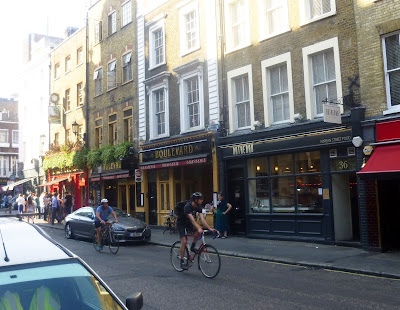

Covent Garden Market had its beginning in 1835 when a patent was issued to hold a “public fair or mart” in the area of Richmond, Dundas and King Streets. In 1845, the Market found a permanent home when city business owners donated land near Richmond, Dundas and King Street.
By then I was pretty exhausted, but the Covent Garden tube station was closed, so I had to walk to Leicester Square (Piccadilly line -> Warren Street & then Victoria line -> Pimlico











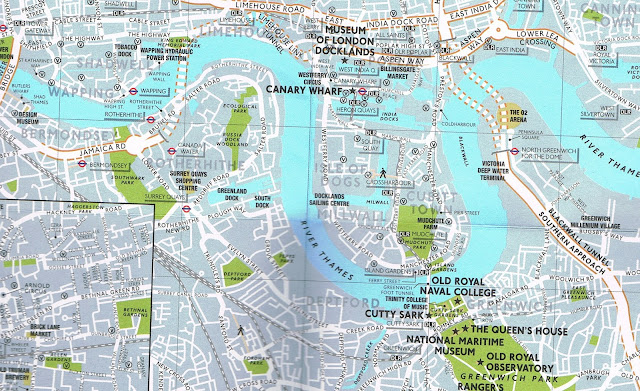


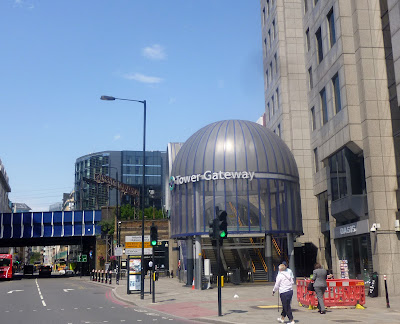























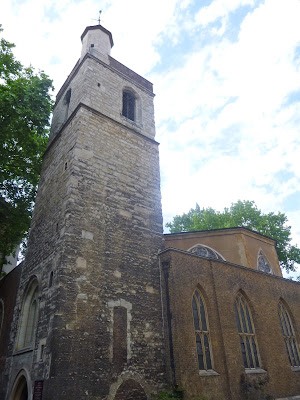










Geen opmerkingen:
Een reactie posten